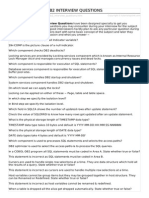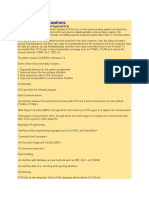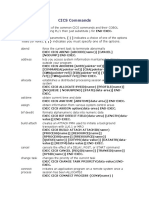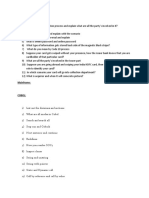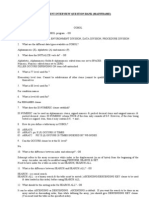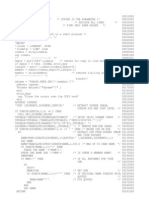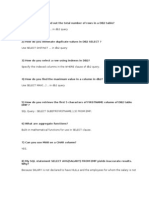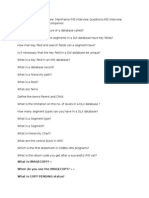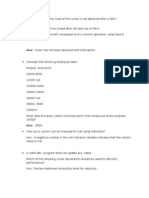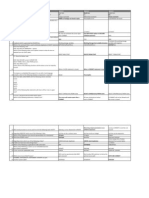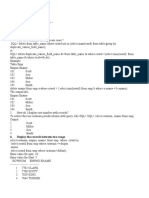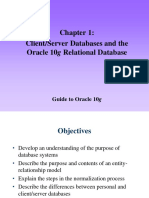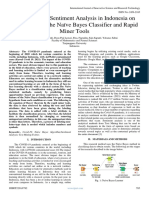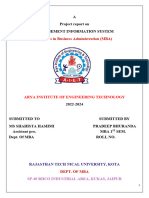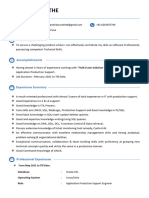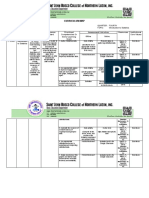100% found this document useful (1 vote)
2K views21 pagesDb2 Interview QUESTIONS - Advertisement: Java Inteview Questions DB2 SQL Tutorial Mainframe Inteview Questions
This document provides questions and answers about DB2. It includes questions about SQL queries to find the number of rows in a table, eliminate duplicates, use indexes, find maximum values, concatenate columns, use aggregate functions, and more. It also includes questions about concepts like cursors, locking, isolation levels, and lock escalation in DB2.
Uploaded by
sroul4Copyright
© Attribution Non-Commercial (BY-NC)
We take content rights seriously. If you suspect this is your content, claim it here.
Available Formats
Download as DOC, PDF, TXT or read online on Scribd
100% found this document useful (1 vote)
2K views21 pagesDb2 Interview QUESTIONS - Advertisement: Java Inteview Questions DB2 SQL Tutorial Mainframe Inteview Questions
This document provides questions and answers about DB2. It includes questions about SQL queries to find the number of rows in a table, eliminate duplicates, use indexes, find maximum values, concatenate columns, use aggregate functions, and more. It also includes questions about concepts like cursors, locking, isolation levels, and lock escalation in DB2.
Uploaded by
sroul4Copyright
© Attribution Non-Commercial (BY-NC)
We take content rights seriously. If you suspect this is your content, claim it here.
Available Formats
Download as DOC, PDF, TXT or read online on Scribd
/ 21
